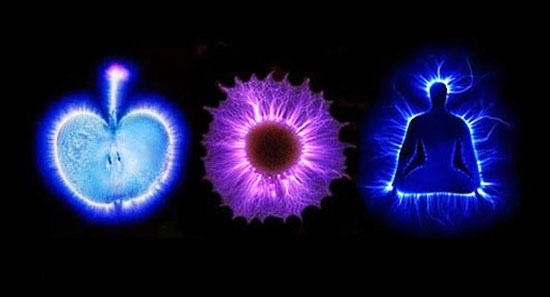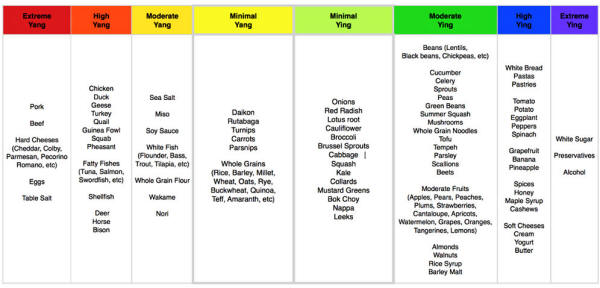|
November 18, 2016 When considering the health benefits of the foods we eat in the West, we tend to think of them in terms of their nutritional value - the vitamins, minerals, fats, proteins and carbohydrates - but in other parts of the world, primarily China, India and the surrounding areas, the health benefits of food are categorized more by their energetic effects on the body and mind.
It's a simple but important distinction, yet these two viewpoints are not necessarily at odds with each other. In fact scientific studies into the nutritional value of foods often confirm ancient views of their energetic effects on the body.
For example, in Ayurveda, the ancient Indian system of medicine (one of the oldest on the planet dating back over nearly 7,000 years), ghee, which is clarified butter, is believed to be calming and relaxing in its energetic effects.
Western nutritional analysis of ghee reveals it is one of the most concentrated sources of beneficial saturated fat known to man. Saturated fat, it has been shown, is an essential component of the myelin sheathing that coats nerve endings.
If this myelin sheathing is thin or of low quality (due to consuming refined, low quality foods and fats, or having a deficiency of saturated fat in your diet), it causes over-stimulation of nerve endings, which has been shown to cause anxiety and agitation.
Consequently, when we have abundant sources of high quality saturated fats like ghee or coconut oil in our diet, this myelin sheathing is strengthened and we are calmer as a result.
The point of and benefit to understanding food energetics is to develop a more holistic perspective on our own health.
There is a danger in focusing solely on nutritional properties of food when considering its effects on our health, and that has to do with ignoring the energetic properties of food.
For example, in the West, fruits are considered to be extraordinarily healthy pending they are fresh, grown organically, are non-GMO and produced without the use of chemicals and pesticides.
They have many great nutritional qualities like being high in fiber, rich in water, minerals, and B-vitamins, and are also full of antioxidants and many substances that have been show to fight cancer, improve mood and energy, and generally support overall health and wellness.
Sounds like a great idea to eat them all the time, right? Well, not so much when you understand food energetics.
Here's why:
Dampness is just what it sounds like:
Overeating fruits causes dampness to form in the intestines, and dampness in the intestines eventually causes chronic diseases to form like candida, a fungal infection that thrives in damp, moldy environments and can be hard to get rid of.
Candida causes a number of unpleasant symptoms from rashes to brain fog, to chronic fatigue, allergies to food, lethargy and more.
As you can see, when considering the Western nutritional value of a food, fruits seem awesome! By that logic, you can't go wrong eating fruit all day. However, when we integrate the energetic perspective on fruit, it becomes clear that you don't want to overdo it.
When we view food in terms of its energetic properties, we begin to understand a key principle in creating radiant, lifelong health, which is balance.
So long as a food is,
...it is inherently healthy in terms of its energetics - so long as it is eaten in moderation and in balance in relation to the energetics of the rest of the foods in your diet as well as your personal constitution, which we'll get into shortly.
What is important when considering food energetics is that you maintain balance across the different types of food energies that can be present in your diet.
In Traditional Chinese Medicine, for example, there are many different ways we can categorize the energetics of a particular food, a few of which are as follows...
Yin-Yang Spectrum
Here's a simple graphic from model4greenliving.com that illustrates this principle:
Taste and Flavor
Each food also has a specific taste or flavor which produces different energetic effects on the mind and body as well.
Balancing Yin and Yang
As you can see, each food has yin or yang effects as well as a flavor that confers additional effects in the body and mind.
Eating too much of any one type, taste or category (yin/yang) of food can cause an imbalance in your health and energetics. In Chinese culture, for example, where much of this knowledge originated, in most dishes and recipes they strive to include all five flavors and foods that are both yin and yang.
This way, the body naturally stays in balance on an energetic level throughout the day and health is maintained effortlessly.
Your Personal Constitution and Food Energetics
Although understanding basic food energetics is fundamental for creating radiant, lifelong health, the rabbit hole goes quite a bit deeper than that when it comes to food energetics.
In addition to each food having its own unique energetic properties and constitution, your body does as well.
In Ayurveda, this is called your doshic makeup (or prikriti/vrikriti) and in Chinese Medicine each person is believed to have an elemental type:
For the sake of simplicity, we'll focus in on the Ayurvedic doshas here, although do know that there is quite a bit of overlap between these two systems.
Ayurvedic Doshas
It is also important to note that no one embodies only one dosha.
Everyone has a dominant doshic type and a subdominant type. In rarer cases someone might have a perfect balance between two doshas and in even rarer cases be perfectly tridoshic.
We all have elements of all three doshas in our constitution, however, as a general rule of thumb, whichever dosha or doshas are most strongly dominant will determine what our bodies most need on an energetic level.
Eating for Your Constitutional Type
Depending on your doshic makeup, you will want to adjust your diet accordingly.
For example, Pitta types should place a slightly greater emphasis on yin foods generally speaking as the cooling effect they have on the body will balance out their fiery nature.
Vata types need to strive for balance between yin and yang foods and Kapha types generally do better with slightly more yang foods in their diet.
Energetic needs also change greatly with the seasons and climates. In the summer, the body will naturally crave more yin, cooling, sweet foods to help dissipate the heat in the environment and keep the body in balance, no matter what your doshic makeup.
In the winter, on the other hand, yang, warm foods will generally be craved to balance out the colder temperatures.
In warm, tropical climates, there grows an abundance of fruit (yin) because that is what the body does best on, and in colder climates, there tends to be mainly root vegetables and meat (yang), which is what the body needs to thrive there.
As you learn the energetic properties of the foods you eat and begin to tune into that level of awareness in your body, you will begin to sense when you are getting out of balance and need to eat certain foods to bring yourself back into homeostasis.
For example, have you ever noticed that after eating really salty foods that you crave something sweet or vice versa?
This is your body seeking to maintain energetic balance within your system. In fact, we are always getting signals like this, but it requires us to develop a more intimate connection with our bodies to tune into the oftentimes subtle intuitions and signals they are sending telling us exactly what we need to thrive and what we should be eating next to stay in balance and good health.
If you start to pay attention to these signals regularly, over time it becomes quite easy to maintain energetic balance within your body and mind, which always leads to greater health, happiness, harmony and flow.
Here's an exercise to get you started on the journey of becoming more aware of the connection between your body, mind and the energetics of the food you eat, and what you need to eat to harmonize all three...
Exercise - Sensing the Energetics of Food
Typically when we eat a meal, we eat multiple foods and ingredients at once.
This is not necessarily a problem, but when learning to sense the energetics of food and how they affect your body, it can make it difficult to discern what's what - that is, which ingredient is having which effect on your state of mind and health.
To begin developing or refining your energetic sensitivity, try the following:
References
|



